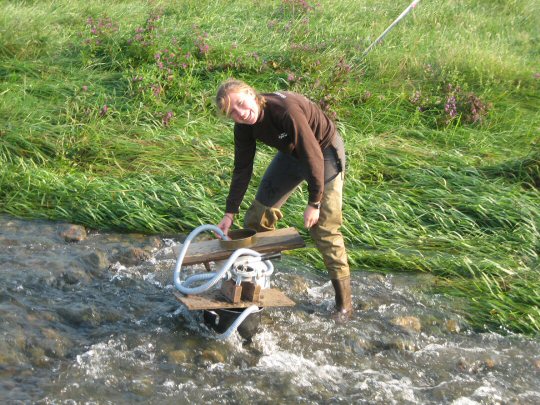
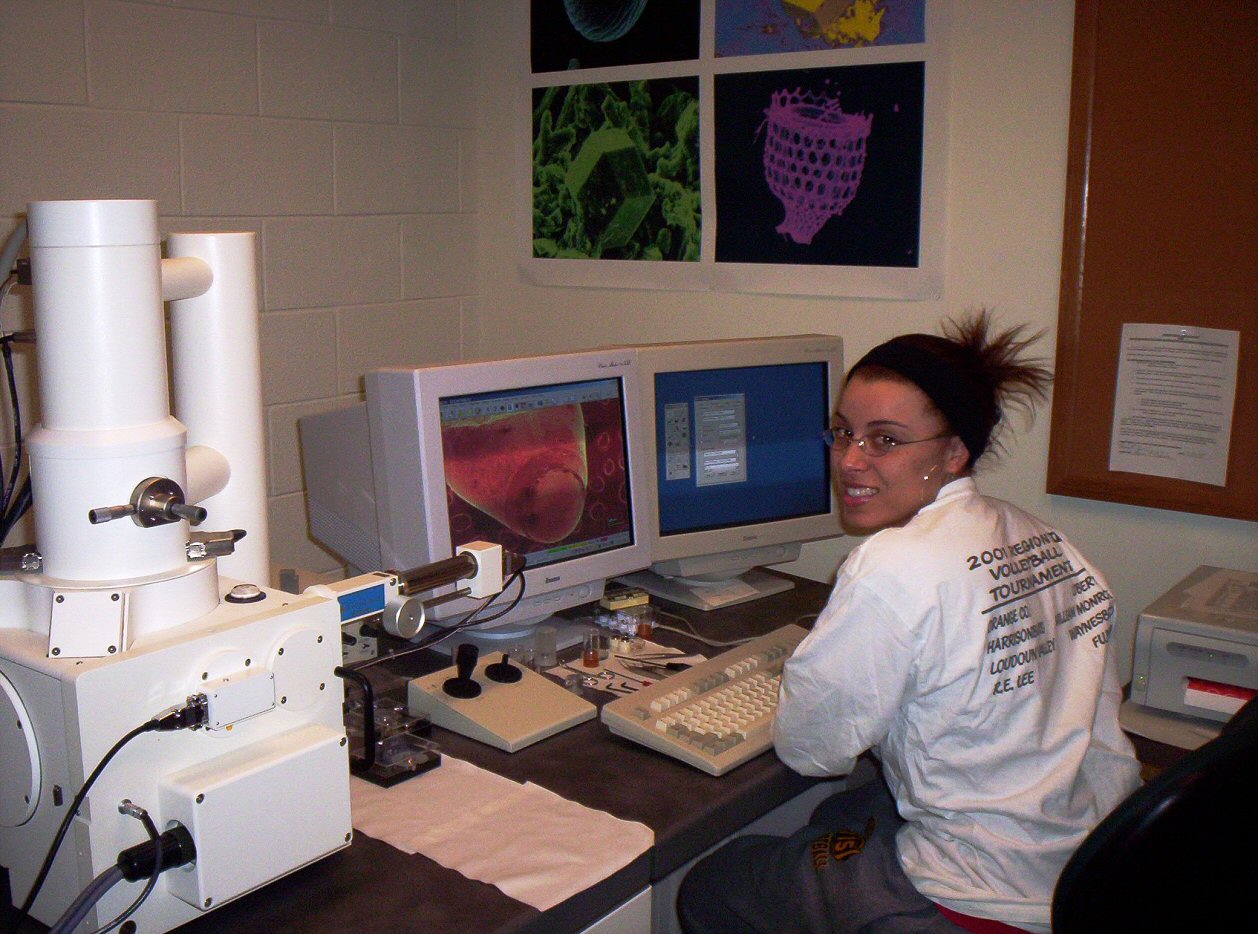

 |
 |
 |
The Department of Geology and Environmental Science proudly presents the2007 Student Research SymposiumApril 27, 2007 |
 |
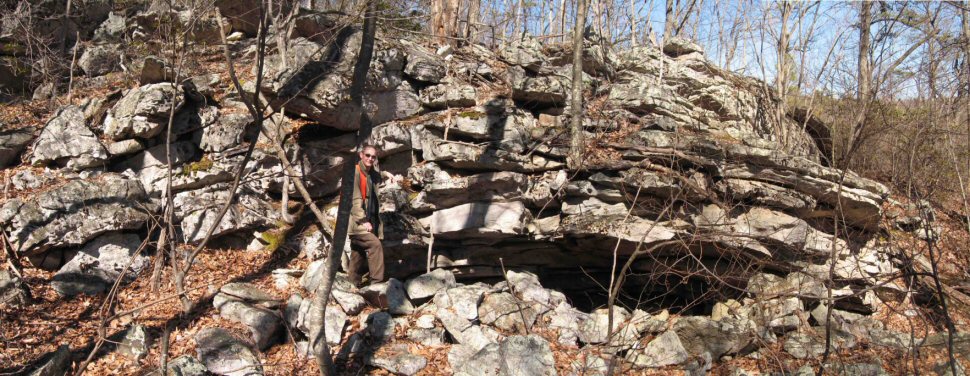 |
| For more information contact: Kristen St. John (stjohnke_at_jmu.edu) or Liz Johnson (johns2ea_at_jmu.edu). |
SOUTHEAST-DIRECTED BACKTHRUSTING AND CRUSTAL THICKENING IN THE MASSANUTTEN SYNCLINORIUM, ROCKINGHAM AND PAGE COUNTIES, VIRGINIA The Massanutten synclinorium is the dominant topographic and geologic structure of the Shenandoah Valley of Virginia, extending for approximately 160 km along a northeast strike. The synclinorium consists of open to tight folds that are typically upright or inclined to the northwest. However, previous work and more recent mapping have identified regionally extensive southeast-verging structures. Recent mapping across the Massanutten synclinorium in the Tenth Legion quadrangle suggests that the eastern-most ridge is part of a west verging structure, while the western portion of the Massanutten synclinorium displays an overall east vergence, possibly due to a southeast-directed backthrust. Strike and dip data was primarily collected over six transects that trend perpendicular to strike, as well as from other outlying areas. Cross bedding, ripples, remnant burrows and graded bedding were used to indicate stratigraphic way-up for the Massanutten Sandstone, which is the most competent unit in the region. Indirect evidence of southeast-directed backthrusting, such as locally tight folding and dramatic shifts in dip angles, can be seen at Morgan Run, Koontz Hollow, and Pitt Spring Run. Thus, southeast-directed backthrusting likely produced local modification of the predominantly northwest-verging structure of the Massanutten synclinorium and suggests crustal thickening along the axis of the Massanutten Mountain complex. This may explain, in part, the present-day high relief of these ridges relative to the rest of the Shenandoah Valley . |
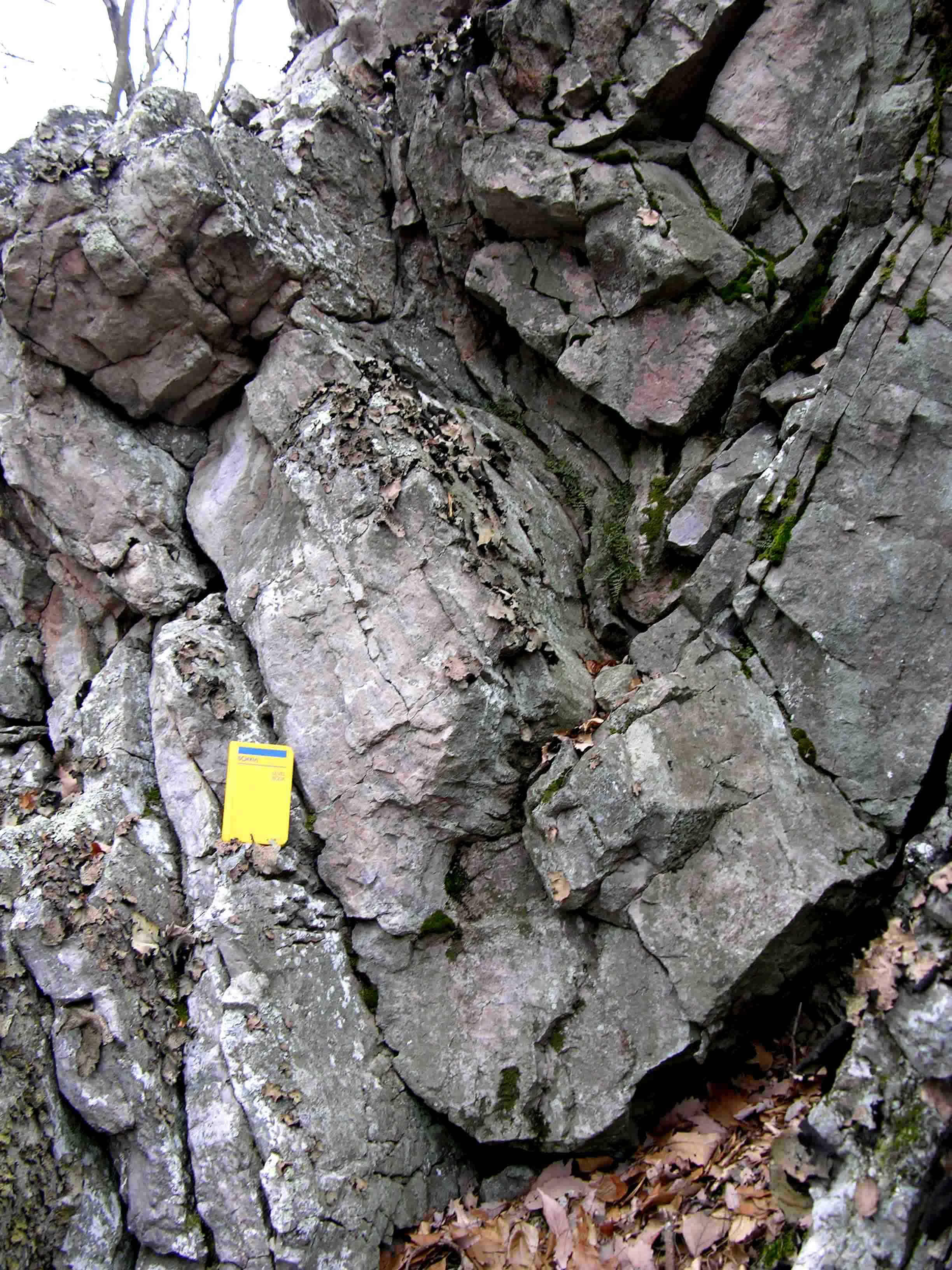 |
| back to schedule | |
DENDROCHRONOLOGY FROM WETLAND VEGETATION AS A PROXY FOR GREAT LAKES CLIMATE CHANGE AND LAKE LEVEL FLUCTUATIONS Lake Michigan and Huron water level fluctuations, occurring largely as a result of long term climatic change for the past 4500 cal years B, have been established by Baedke and Thompson (2000). Independently, a paleo-temperature reconstruction computed from chronologies of Bristlecone Pine (Pinus Balfouriana) located in California 's White Mountains show in-phase relationships with lake level data on a centennial order. Within the Great Lakes region it has been shown that water levels in ombotrophic lakes, established from testate amoebae data collected from peat cores, can also be used as a proxy for these Great Lake water level fluctuations over this same time interval (Booth, 2003). Our study attempted to establish an additional proxy from a dendrochronology of 79 Eastern White Pine (Pinus Strobus) located within St. Vitals Bay Michigan. Despite constructing a successful chronology and allotting for inherent lag, we were incapable of establishing a clear relationship between favorable tree ring growth and lake level fluctuation on a decadal or annual order. However, by incorporating aqueous geochemical data from wetlands contained within the St. Vitals embayment we have been able to identify a dynamic hydrological wetland environment containing localized recharge, through-flow and discharge zones. These zones appear to have a dampening effect on the climatic signatures preserved within the White Pine dendrochronologic record. As a result, only extreme conditions seem to be preserved in the tree core record. |
|
| back to schedule | |
Concentration of Heavy Grains in the Core Catcher Samples of Mid Eocene to Late Pleistocene Sediments From the Lomonosov Ridge, Arctic Ocean Sediments recovered by Integrated Ocean Drilling Program (IODP) expedition 302 from the Lomonosov Ridge in the Arctic Ocean appear to contain concentrations of heavy grains in the core catchers portions. Unpublished results by members of the scientific party suggested that metallic micro spheres and fish teeth are more abundant in the core catcher samples through out the core. These initial observations have prompted our further examination of the core catcher samples to determine if heavy grains occur in abundance in both the >250 m m and 150 m m to 250 m m size fractions of core catcher samples. These heavy grains refer to mafic minerals, weathered and non weathered metallic fragments, siderite, rhodochrosite, and cosmic spherules. Whether or not there are increased concentrations of heavy grains in the core catcher samples is significant because it has direct implications for any study using downcore comparison of sediment grain size and composition, such as the reconstruction of ice rafted debris abundance histories. To date, our visual observations indicate that such heavier grains are consistently more abundant in the core catcher samples then in other samples of the drill core. Ongoing SEM and elemental analyses are used to help characterize the texture and composition of these grains. The mechanism which caused the abundance of the heavy grains in the core catcher portions of samples is likely related to the drilling operations.
|
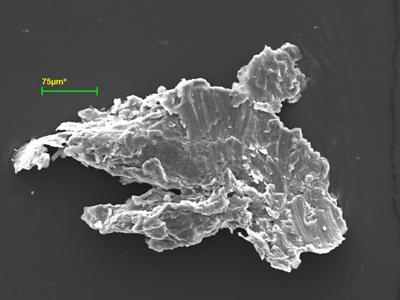 |
| back to schedule | |
Mineral Assemblage of Cedar Mountain Quarry Cedar Mountain Quarry is located on a 1000 acre tract in Culpeper County , Virginia , near the town of Mitchell . It was originally opened in 1979 and operated under the name of the A.H. Smith quarry, along with a similar quarry in nearby Louisa County , Virginia . In early spring of 1998, mining operations in the quarry exposed several areas of extraordinary mineralization. Sixteen different mineral species have been identified from the quarry. A large intrusive, referred to as the Rapidan Diabase Lopolith, is exposed in the quarry where it is mined for dimension stone and gravel. It is upper Triassic to lower Jurassic age. Previous mineralogical references to this site are quite scarce. It has been mapped as a great sheet-like body ( Lee and Froehlich, 1989; Smoot and Sutphin, personal communications, 2002). USGS reports this body as a concave-up intrusive that cradles in its interior a massive inlier of Balls Bluff siltstone, grading into its contact metamorphosed equivalent hornfels. Using Advanced Manufacturing Technology (AMT) transverse paths for the USGS survey, two two-dimensional electrical resistivity cross-sections through the Lopolith illustrate that it extends approximately 500 meters beneath the surface. The body of the diabase is believed to be overlain by a 10-20 meters thick hornfels veneer. This division has been interpreted as being mainly induced by undulations in the contact zone topography at the time of intrusion. Undulations in the contact topography between the diabase and the soft/unconsolidated Balls Bluff siltstone are quite common for the basic intrusions invading sediments, as is appropriate for the Culpeper Basin . There are two major styles of mineralization at Cedar Mountain. The first is an Alpine Vein-like mineral assemblage, which was followed by a classic, trap rock/zeolite mineral assemblage. Veins and fractures as well as irregular shaped replacement areas within the Rapidan Diabase Lopolith were mineralized. Upon cooling, hydrothermal fluids deposited the minerals immediately following the igneous emplacement of the diabase. Normally in a “typical” Alpine vein assemblage a quartz zone or layer is deposited, however, with the scarce traces of quartz found in Cedar Mountain it is believe that the crevice was formed in relatively basic rocks. Quartz formation in these crevices would usually have formed between 575°C to 350°C plus or minus 20°C. Therefore, due to the lack of quartz abundance it is assumed that first deposition must have taken place towards the close of the adularia period at a temperature of around 350°C, at which a much larger deposition of minerals appears as the ones seen at Cedar Mountain . Alpine mineral specimens recorded for the Cedar Mountain Quarry would have formed in the 90°C to 350°C range, and as the temperatures dropped below this range the trap rock/zeolite mineral assemblage would have become more abundant producing minerals such as stellerite, chabazite, pectolite, and thausmasite. |
 |
| back to schedule | |
| Electrical Resistivity Investigation at the Rivianna My geophysical research project will pertain to a capped off landfill in the Rivanna landfill outside of Charlottesville, Virginia. I will be looking at the recovered electrical resistivity data to see if the the safety precautions taken by the government are working properly. My speech will include a brief introduction and conclusion. The body of my presentation will describe surroundings and possible noise, interpretations of the data, and graphical displays of the data collected. |
 |
| back to schedule | |
INVESTIGATIONS INTO THE LITHOLOGY AND SOURCE OF THE STONE USED ON THE EAST PORTICO STEPS OF MONTICELLO, CHARLOTTESVILLE, VIRGINIAChristopher W. Myers and Dr. W. Cullen Sherwood Twentieth century repair work on the East Portico at Thomas Jefferson's Monticello yielded a broken piece of the stone used for the steps. This was loaned to the JMU Department of Geology and Environmental Science to identify the lithology of the stone and try to determine its source. The stone was examined macroscopically, and thin sections were made and analyzed using the petrographic microscope. Maps of the local geology were obtained and studied in order to determine possible locations for the source of the stone. According to records on file at Jefferson's Library, in 1822 when Jefferson was 79 and four years from his death, the East and West porticos were still unfinished. The stone pillars of the East portico were in place, but only temporary wooden steps were in use for both porticos (with wood beams acting as pillars for the West portico). In 1822, Jefferson hired John Gorman, who had done much of the stonework at the University of Virginia, to quarry, cut, and lay the bricks for the West portico columns. Jefferson assigned Gorman one slave, named Thrimston, as an apprentice and two more to serve as manual laborers. After Gorman completed this task, he bargained with Jefferson to do the stonework on the steps and floors if Jefferson would board him while laying and cutting. Jack McLaughlin in his book, Jefferson and Monticello: The Biography of a Builder (1988), answered the question about whether or not the stone for the steps was imported or locally quarried; "Gorman, whom Jefferson termed 'sober, skillful, and industrious,' also quarried, cut, and laid stone and slate on the platform floors and steps of both porticoes." With the completion of Gorman's efforts, Jefferson's work on his Monticello was finally complete. |
|
| back to schedule | |
SUBSURFACE STRATIGRAPHY AND AQUEOUS GEOCHEMISTRY AS INDICATORS OF HYDROLOGY IN BEACH-RIDGE COMPLEXES: TWO CASE STUDIES FROM THE UPPER GREAT LAKES
|
|
| back to schedule | |
Ice-Rafting Evidence for Climate Change in the Early Eocene In 2004, the Integrated Ocean Drilling Program (IOPD) sent an expedition to the central Arctic Ocean and drilled hundreds of meters of sediment cores to get a never before seen record of the transition from a “Greenhouse” Earth to the “Icehouse” we see today. The site chosen for the drilling was the Lomonosov Ridge, which is a marine sediment-draped continental fragment broken off from Russia that has since eroded and subsided. This ridge is great for this type of coring because it has preserved an almost pristine record, with just two hiatuses, that continues 450 meters into the Earth which equates to 80 million years of history. And by translating depth to age, scientists can use this record to find evidence in the core samples of certain climatic conditions at specific geologic times. Thus, a history of climate change can be reconstructed. The focus of my research, and next step in the overall research program, is documenting the history of ice rafted debris (IRD). Initial work by Dr. St. John, Michelle Summa, and Kristen Mullen showed evidence of IRD at a time when there was supposedly no ice on the planet. My work picks up with a new sample suite, as well as with some previous samples of Arctic sediment between 44 and 46 million years old. In this higher resolution sample suite, I am looking to develop a more detailed reconstruction of ice presence in the Eocene in the form of IRD mass accumulation rates and source area compositions. Once this is done, I will fold my data in with what was done last year to get a more comprehensive record of the early Eocene climate change history. This work is very important because if we can get a more detailed documentation of ice-rafting history in the Eocene Greenhouse to Icehouse transition and figure out when and how these changes occurred, then we will have a better understanding of what causes them, which would be very relevant to today's global warming frenzied culture. |
|
| back to schedule | |
MONITORING RIPARIAN RESTORATION: QUANTIFYING THE EFFECT OF FINE SEDIMENT ON BROOK TROUT INCUBATION HABITAT AS SPAWNING GRAVEL QUALITY IMPROVES Increased sediment loads have contributed to a decline in populations of gravel-spawning fishes throughout agricultural areas of eastern United States . Interest in the causes and effects of this decline is linking ecologists with geomorphologists to identify relationships between fish populations and streambed permeability. The link between spawning success rates and gravel permeability has been experimentally studied. Gravels with high permeability have higher egg survival rates for gravel-spawning salmonids. The permeameter is a precise in-situ tool that directly measures streambed permeability. We used this instrument to test spawning gravels in Smith Creek ( Rockingham County , Virginia ), a stream heavily impacted by sediment from decades of intensive agricultural practices. In the summer of 2006, a major restoration effort began on Smith Creek including the planting of 12,000 trees and cattle fencing to restore brook trout habitat. By measuring permeability we were able to quantify the effect of fine sediment on brook trout incubation habitat. Measured changes in gravel permeability in Smith Creek after restoration efforts provide useful information on the improvement of spawning habitat over time and the potential for successful re-introduction of brook trout. |
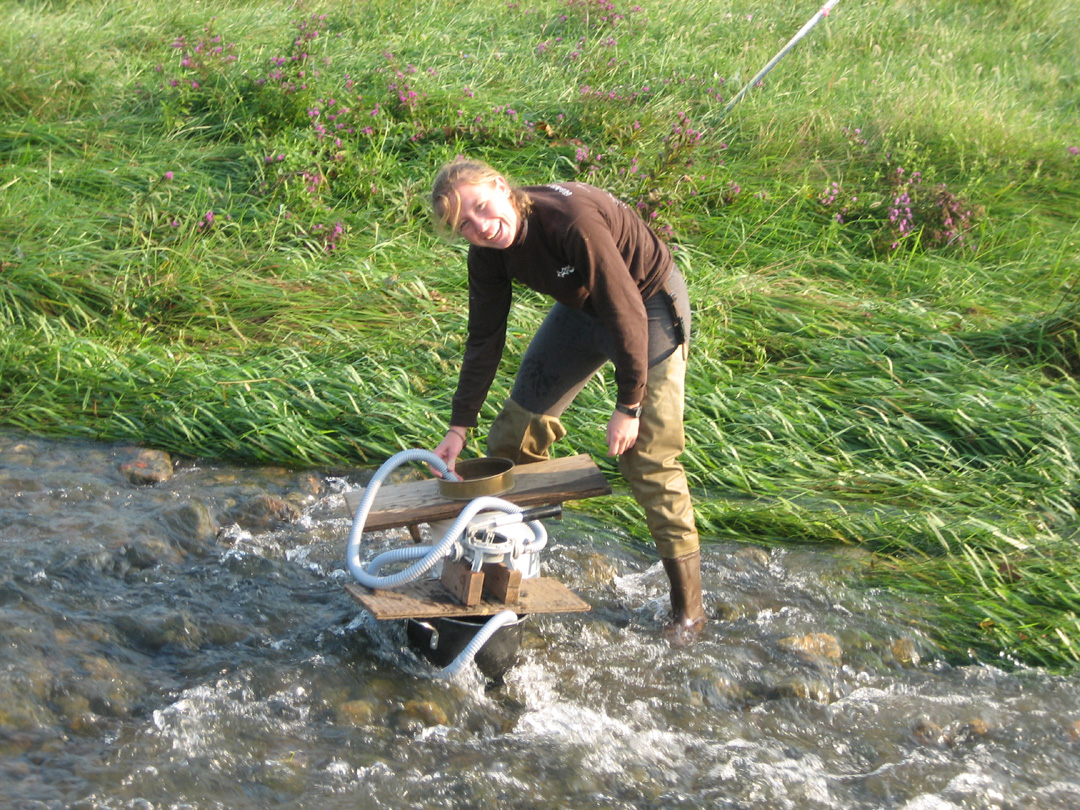 |
| back to schedule | |
Bed Mobility at Smith Creek The spawning ability of trout is directly correlated to the deposition and entrainment of fine sediment in the streambed. Fine sediment in a streambed reduces the permeability and hydraulic conductivity of the substrate thus not allowing oxygenated water to come in contact with incubating trout eggs. In order for the fine sediment to be flushed out of the streambed, the larger overlying spawning gravels must first be mobilized to allow the sediment underneath to flush out during flood events. This project studied the relationship between stream discharge and the mobility of the median spawning gravel size found in Smith Creek. Smith Creek is located in Rockingham County , Virginia in the Shenandoah Valley and is impaired by fine sediment stored in the streambed. The section that is being studied meanders through about thirty acres of land that was previously used for grazing and livestock production. Six riffles of different median gravel sizes were selected in order to calculate the mobility rates of various sized gravels. A local gaging station located downstream of the study reach was used to acquire discharge data from 8-01-1960 to the present to calculate partial series and annual reoccurrence intervals for flood frequency analysis, and to determine the probability that a flushing flow of a given magnitude would occur in any given year. Data from a gage station located in the study reach that has been in operation for the past year and a half was used to calculate discharge for individual high flow events during the study period. Using the Shields relationship, discharges needed to mobilize the spawning gravels were calculated. The Shields equation helps to determine the shear stress needed to move a particle of a certain size. To test predictions, ten to fifteen cobbles were also placed in the six pre selected riffles to compare the predicted discharges to mobilize the cobbles with actual cobble movement. Using the calculated reoccurrence intervals, the findings in this study can be used as a predictor tool as to when the spawning gravels can be expected to become mobile. The mobility rates can help set a timeline as to when the creek maybe able to support trout reproduction. |
|
| back to schedule | |
INTERACTIVE SCIENTIFIC MODELING OF AN ISLAND ARC SYSTEM: EXPANDING GEOSCIENCE EDUCATION Modern education is moving away from the blackboard and towards digital mediums for teaching and understanding subjects. With this switch in the classroom's methods the sciences must also push past the old fashioned distorted, inaccurate, images and diagrams to create new interactive accurate digital models and images. This project addresses these problems in the form of a user friendly program that exhibits a scaled digital cross-section of a volcanic island arc system, complete with interactive capability, to demonstrate many of the processes and facies that go into creating and defining this tectonic environment. The program is accessible and informative to both secondary education and introductory undergraduate classes. The final product is a multilayered, scaled cross section of a complete island arc system. Type examples used for research (e.g. Tonga trench, Marianas system, Aleutian arc) are at an average scale of around 300km from trench to back-arc basin. To accommodate for scale differences the program has zoom features that have the ability to show the overall system as well as specific details in the form of layers demonstrating geologic facies, structural features, isotherms, and seismics. The detailed sections and animations emphasize the geology and processes inherent in the system and therefore incorporate exaggerations that are explicitly confined, but are necessary to effectively present the concepts. The user-friendly interface is created with a standard programming language that is universally available and lends itself to both students and professionals. The program is intended to be able to reach a multitude of age levels with its ease of use and ability to selectively incorporate as much or as little depth depending on the amount of detail sought. |
|
| back to schedule | |
COMPARISON OF NON-INVASIVE GEOPHYSICAL METHODS TO DISCOVER CAVE STRUCTURES In this study, multiple geophysical methods are used to detect the presence of karst terrain, an area containing underground voids or caves. The site chosen is adjacent to Barb's Run, located in Shenandoah County , northwestern Virginia . This site is one mile downstream from what is locally known as Adam's Cave located in Barb's Gap, also in Shenandoah County , Virginia . Historically, Adam's Cave was used as a water source, since a spring exits the cave. Data has been collected from the site that includes electrical resistivity methods, cesium vapor magnetometer, and ground penetrating radar (GPR). The locations of several data sites were precisely determined using global positioning systems, (GPS). Different geophysical methods provide differing accuracies and results, so the methods will be analyzed and compared to one another. The data obtained has been put into a geographic information system (GIS); this helps construct a reliable map of the area. Geologic and topographic maps of the area, soil surveys, and aerial photographs have been added with this data to produce interactive maps with user-friendly information. From the data collected, the electrical resistivity data has provided the most useful information about this site, followed by the magnetic data. The GPR data is not quite as useful, but this could be due to interference from the type of bedrock in the area. Overall, these geophysical methods have shown predictable results based on the geology of the area. |
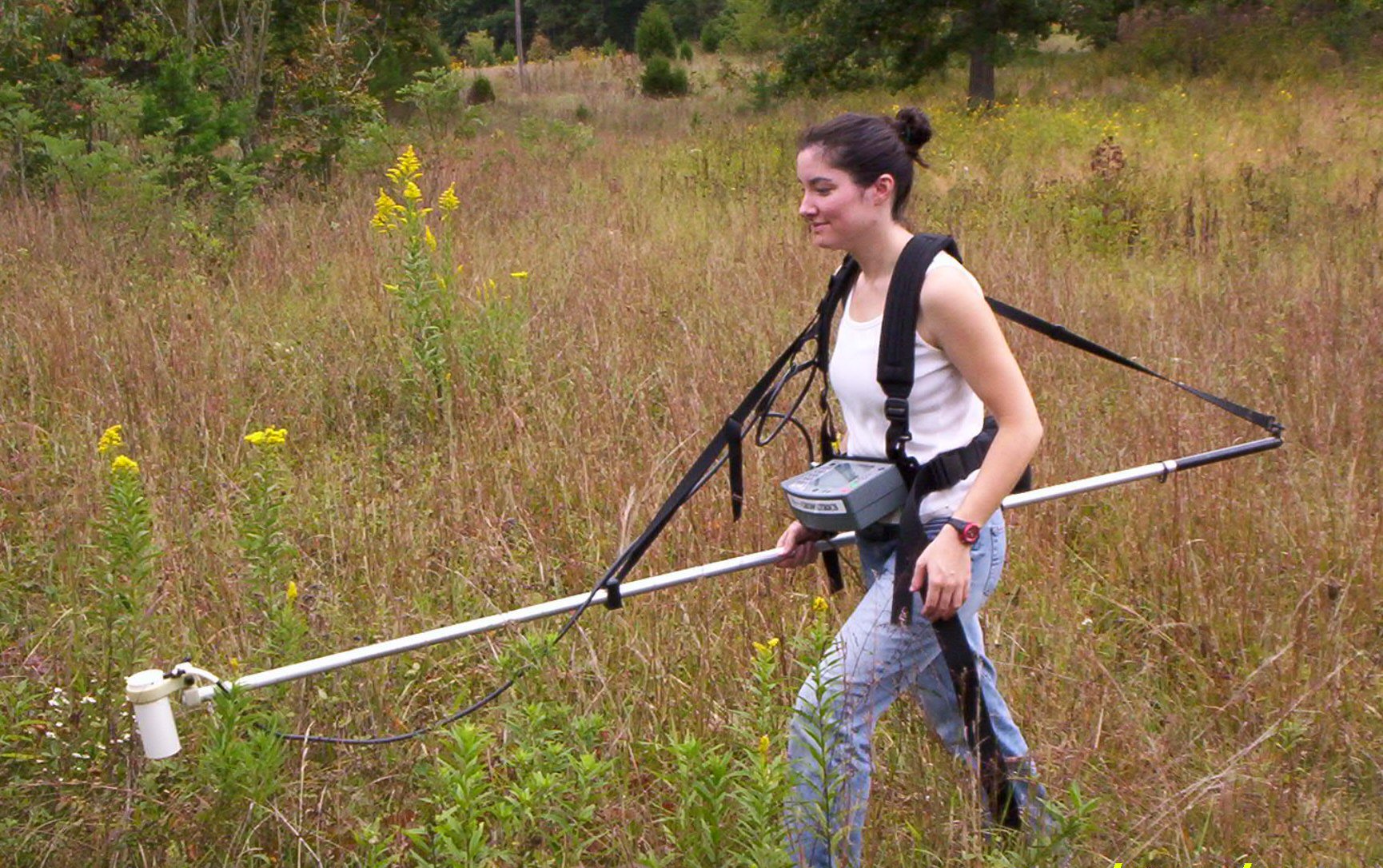 |
| back to schedule | |
A STUDY OF SYENITE DIKES POSSIBLY RELATED TO THE BUCK HILL INTRUSION, AUGUSTA COUNTY , VIRGINIA This study focused on igneous rocks from two dikes suspected to be of similar origin near George Washington National Forest in Augusta County , northwestern Virginia . The dikes are a nepheline syenite that contain small marialitic cavities in which micro-minerals form. Cavities in the nearby Buck Hill syenite intrusion contain rare earth (REE) bearing, as well as other unusual minerals such as synchysite-(Ce) and catapleiite, respectively. This represented the first finds for both of these minerals in Virginia . The Buck Hill syenite also contains calcite, apatite, and arvedseonite. |
|
| back to schedule |